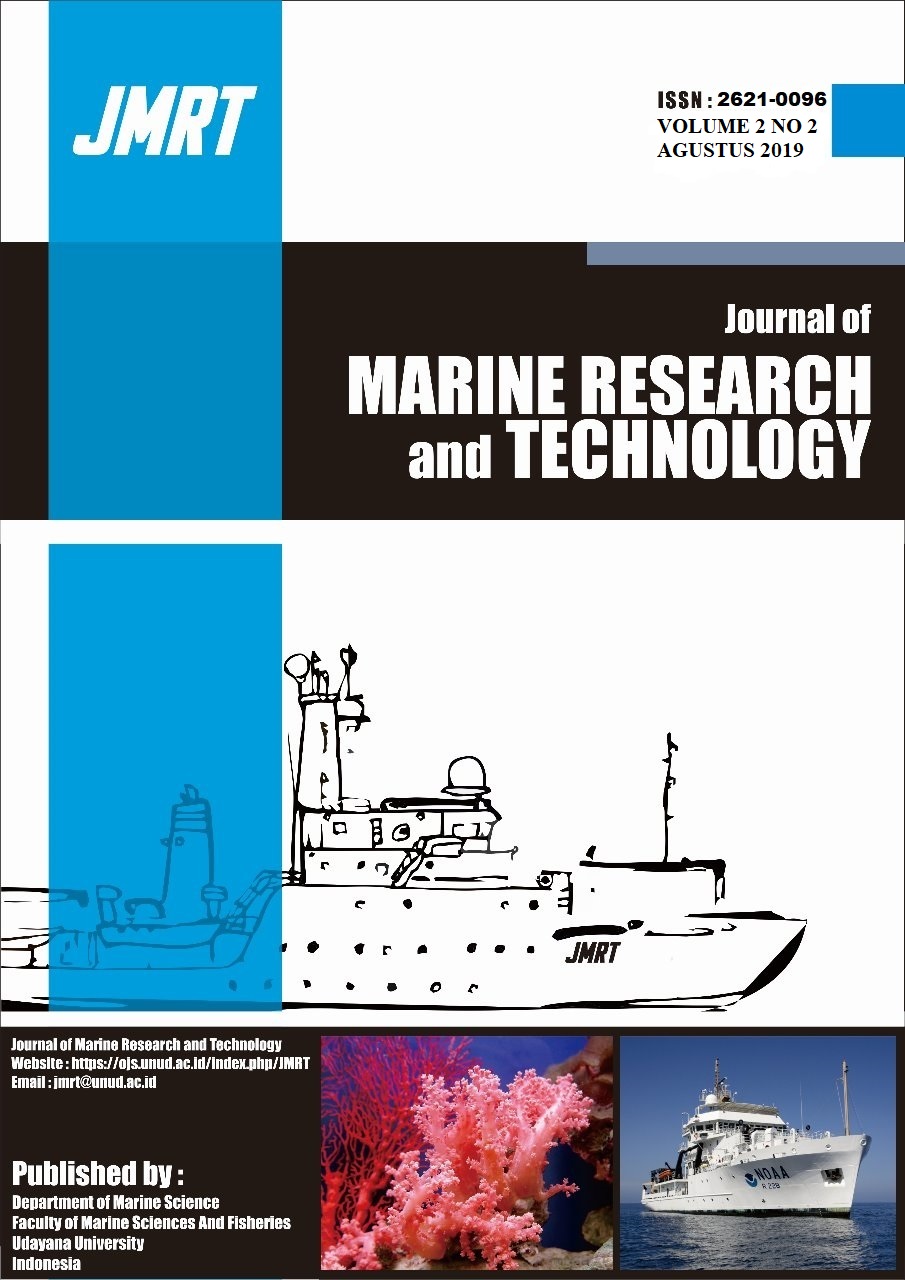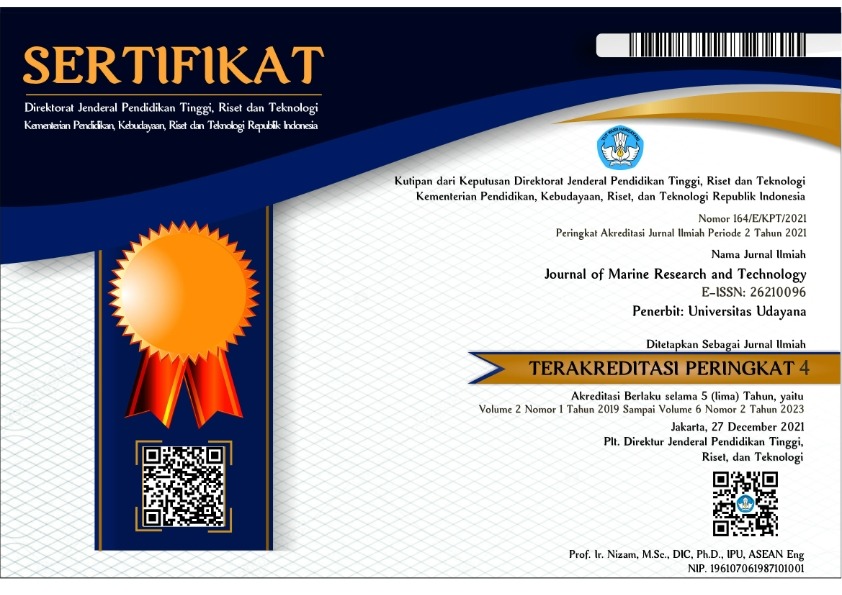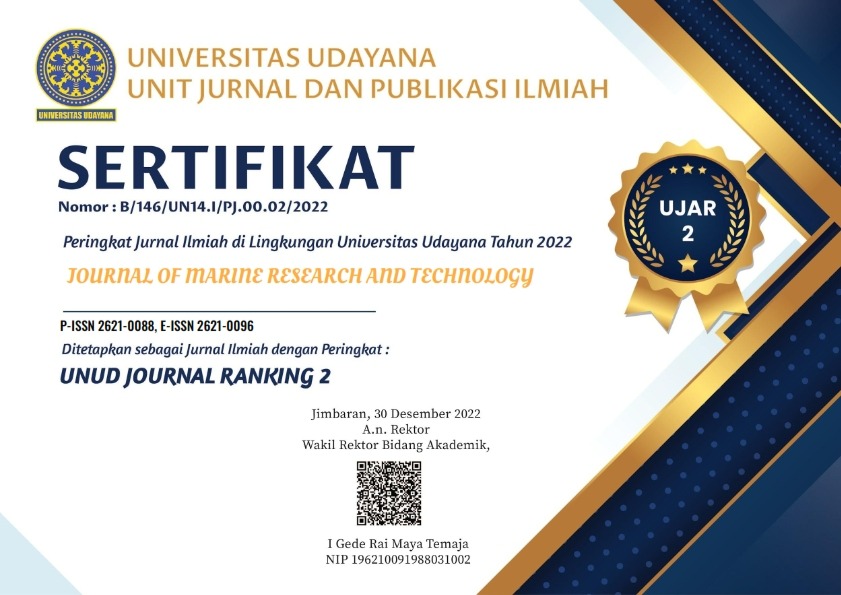Kandungan Mikroplastik pada Saluran Pencernaan Ikan Lemuru Protolan (Sardinella Lemuru) Hasil Tangkapan di Selat Bali
Microplastic; Sardinella lemuru; Bali Strait
Abstract
Bali Strait is a waters region with the greatest potential for catching pelagic fish, one of which is lemuru (Sardinella lemuru). The quality of lemuru fish is thought to decrease due to the presence of plastic waste entering from the watershed and empties into the Bali Strait. The plastic waste will floating in the water column, which causes the plastic to be torn apart or degraded by sunlight and form plastic particles called microplastic. The size of microplastic that similar to phytoplankton and zooplankton allow lemuru to accidentally ingest the microplastic. The purpose of this study was to analyze the type of microplastic and calculate microplastic abundance in the digestive tract of lemuru fish (Sardinella lemuru) caught in the Bali Strait. This research was conducted from May to July 2018. Sampling was done by collecting fish landed at the Kedonganan Fish Landing Port. Sample analysis was carried out at the Laboratory of Marine Science, Faculty of Marine Science and Fisheries, Udayana University. The most common type of microplastic contained in the digestive tract of lemuru fish is fiber, which comes from synthetic materials in clothing and also fishing gear such as fishing rods or nets. Microplastic abundance in the digestive tract of lemuru protolan in this study was 1 particle/fish.
Downloads
Copyright Notice
The copyright to this article is transferred to Journal of Marine Research and Technology (JMRT). The copyright transfer covers the exclusive right and license to reproduce, publish, distribute and archive the article in all forms and media of expression now known or developed in the future, including reprints, translations, photographic reproductions, microform, electronic form (offline, online) or any other reproductions of similar nature.






